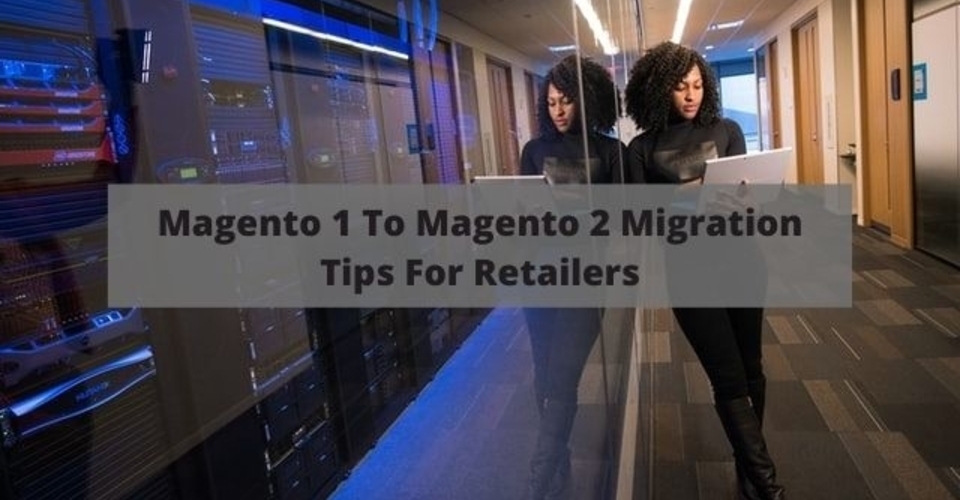With the launch of Magento version 2.0, eCommerce stores worldwide should consider updating their websites as Magento won’t support Magento 1 stores starting from June 2020. As a manual and highly customization platform, Magento 1 to Magento 2 migration is not an easy process. Therefore, in this article today, we would like to discuss the reasons why and how retailers can implement a Magento 1 to Magento 2 migration.
Overview
Why Retailers Should Migrate To Magento 2?
Once the official support for Magento 1 is withdrawn, stores built on this version could be vulnerable to numerous threats. Running a Magento 1 website after June 2020 might make you a target to hackers as there won’t be any official solution for security-related issues for your businesses.

In the last 6 months, it is reported that 79% of smartphone users have made purchases online using their mobile devices. Therefore, it is important for online stores to be mobile-optimized in order to drive higher conversion rates and better sales growth. Compared to Magento 1, Magento 2 enables merchants to do a better job at mobile optimization and stay ahead of the competition.
What Are The Possible Methods For Magento 2 Migration?
Unlike updating apps on smartphones which can be processed within a few simple clicks, approach Magento 1 to Magento 1 migration is nowhere near those upgrades on smartphones. The reason lies in the fact that both versions differ a lot from each other in terms of database structure and codes.
In this article, we have gathered three main ways for Magento 1 to Magento 2 migrations:
- Manual upgrade by using Magento Migration Tool which requires highly coding and technical knowledge. In general, merchants have to deal with fixing code, backing up the database, repairing or fixing corrupted databases
- Hire a developer team or a team of Magento specialists to perform the task if retailers are not confident with their capacity to tackle the process on their own. The price fluctuates around $50-$80/hour, and the total fees over the process could be up to $500-$2500
- Use an automated migration service for the Magento 1 to Magento 2 migration. This method is believed to be the most advanced option. Users are able to upgrade their eCommerce platform with an automated tool, which can transfer data on products, customers, orders, CMS pages, and so on.

What Factors Do Retailers Need To Be Careful Before Migrating?
After discussing who would help you with updating to Magento 2, let’s list what you need to pay attention to before migrating:
- Filtering Data
There is no point in transferring irrelevant information to the new store built on Magento 2. Users should try to filter the data to remove outdated information
►►►► Please visit our products: digital banking, situation analysis, Shopify markets, Vietnam Photography Tour, Photography Tour Guide Viet Nam, supply chain operations management, fintech ai, Multi Store POS, Woocommerce POS, Mobile POS, White label POS, POS Reseller, Beauty Supply Store POS, Retail POS and Vape shop POS
- Review Your Website
Going over your website carefully before starting the development and upgrade process will help address potential bugs and snags. The review will let you know what specific requirements and tasks your developers and designers need to work on
- Replicate Your Site
The risks of data loss during an update will always exist. It is safer to create a replica of the database before completely eliminating your old site
- Freeze Admin Activities
You might run the risk of altering your database if admin activities continue to run during the migration process. It is best to temporarily stop all admin activities to avoid data loss
Magento 1 To Magento 2 Migration Tips For Retailers
Theme Migration
The first step in the process is theme migration. There is no standard tool for theme migration on Magento. Merchants can easily buy a theme from Magento Marketplace or develop a customized theme if they have coding experience. There are around 15 themes on the marketplace that are compatible with Magento 2. Only one of these themes is free, the rest will cost between $17 and $399.

Extension Migration
Similar to themes, merchants should check whether Magento 1 extensions are compatible with Magento 2. Plugins used in the old version are unlikely to work in the new one. Users will have to build new extensions with the migration to Magento 2, which is exactly why business owners should hire a developer team to conduct the upgrade. It takes too much time for the owner alone to work with the migration even if he or she has coding knowledge.

Code Migration
It is highly recommended for retailers to use code migration tools that are available on the Magento Marketplace. Using such tools may drastically reduce the amount of code migration. The tools won’t complete 100% of the task on their own, unfortunately. Merchants may need to manually edit and test the codes after using the tools.

Data Migration
This is the most crucial part of Magento 1 to Magento 2 migration. Data migration could be done through 7 steps below:
- Download the Magento 2 platform
- Use a data migration tool to transfer data from the old website to the new one
- Feed the authorization keys from the Magento website
- Configure data migration tool
- Stop administrative activities to prepare for the migration
- Migrate the data alongside features like shipping, shopping cart, and payment processing

Wrapping Up
In this article today, we have discussed the how and why of Magento 1 to Magento 2 migration. We hope this article is useful in helping you better manage your online stores.
ConnectPOS is a leader in the cloud POS system which provides omnichannel services for retail stores. We support both versions of Magento. No matter which system you use, we will always have your back! Please feel free to contact us if you have any further questions!
